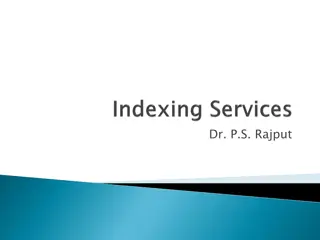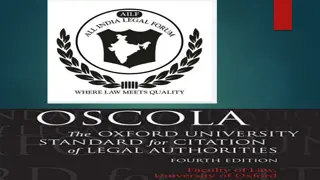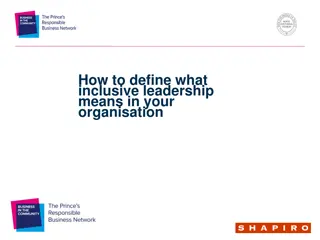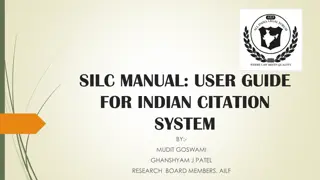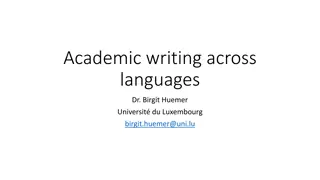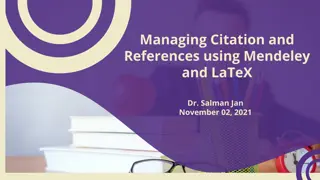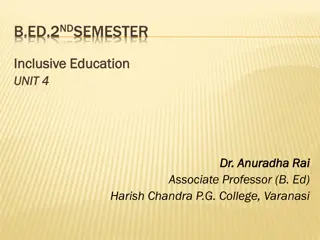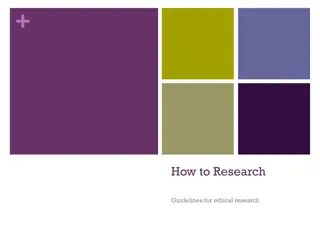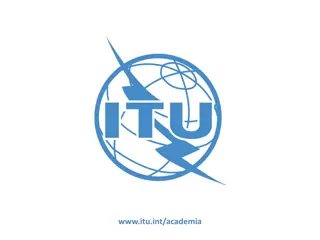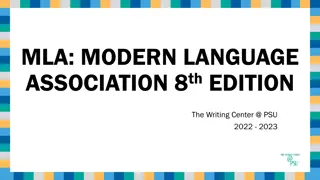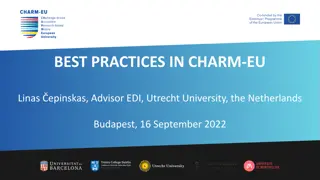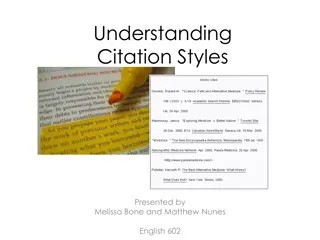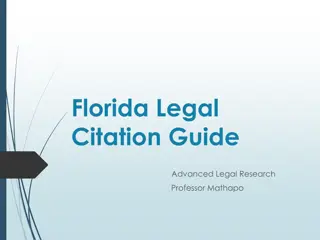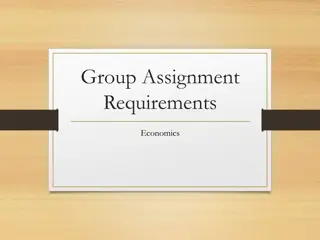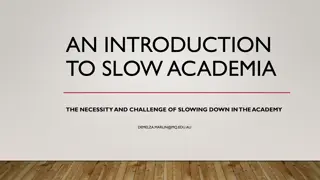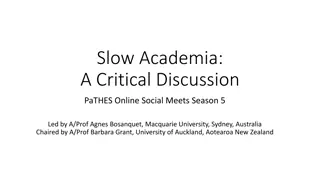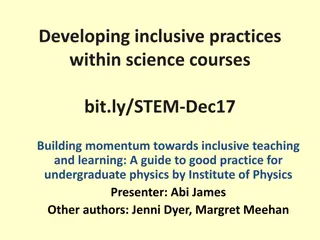Exploring Inclusive Citation Practices in Academia
Explore the concept of inclusive citation practices in academia through a series of informative slides covering topics such as academic neutrality, power structures in citation, unequal power dynamics in academia, colonial legacies, academic vs. non-academic sources, and more. Encourage critical thinking and discussions on how to create a more equitable scholarly environment.
Download Presentation

Please find below an Image/Link to download the presentation.
The content on the website is provided AS IS for your information and personal use only. It may not be sold, licensed, or shared on other websites without obtaining consent from the author. Download presentation by click this link. If you encounter any issues during the download, it is possible that the publisher has removed the file from their server.
E N D
Presentation Transcript
Discussing inclusive citation with students These slides are intended to be used to introduce the subject of inclusive citation to students of all levels or to deepen their understanding. Each slide has a notes section with further information, examples or explanations. This resource has been designed to provide sufficient material for a 50 minute lecture. Individual slides can also be used in existing teaching materials. The final slide gives some ideas of task that students could be asked to prepare for a seminar/workshop.
Inclusive citation/ referencing what is it? Brainstorming ideas What have you been told about what is important when citing/referencing in your academic work?
Is academic citation neutral? Are there power structures with citation? Race Gender Geographical location of author Age Disability Sexual orientation
Questioning concepts of neutrality and bias. Who is judged to be neutral/biased? Are these terms still relevant? - Everyone writes from a particular position. Linked to questions of who is judged to be an expert and whose work becomes the canonical/ must-read text in a subject area.
What does this reveal about unequal power dynamics in academia? Who can access HE? Postgraduate study? Who gets money to fund research? Who has the contacts to publish? Who gets promoted?
To what extent are such inequalities the legacy of colonial power dynamics? the European paradigm of rational knowledge, was not only elaborated in the context of, but as a part of, a power structure that involved the European colonial domination over the rest of the world. (Walter Mignolo, p. 174). Myth of Civilisation mission v. 'barbarianism' Restricted access to education in the colonies Centralisation of European seats of learning
Academic v. non academic sources What is an academic source? What is a non-academic source? Grey literature Why are non-academic sources judged to be less reliable? Is this distinction valid in a digital age? How to reference them?
Why is this important for this module? Central to module's aims: Lecturers have done this work on their own course content and reading lists. On the mark scheme!
What can you do? (1) Be pro-active in citing. Identify what gaps there are in your reading/previous citation practices. Use twitter to follow a greater range of academics and see who they quote/use #s - #citeblackwomen
What can you do? (2) Including your reflections on citation in written work and presentations In Introductions to essays/oral presentations/ literature reviews Discuss whose work is often cited as the canon and whose voices have been historically marginalised. How did you widen your research? What difficulties/successes did you encounter? Give authors' full names when citing (and discuss their positionality) in main body of your work.
Seminar/Workshop preparation Read Bali and Pellis blogs. Choose an article or other written secondary source that you have used in your previous studies. Reflect on the range of authors cited. Whose voices are present/absent? How might this have affected the article's methodology and conclusions? Think about how you are going to work to redress such imbalances in your own work going forward.




